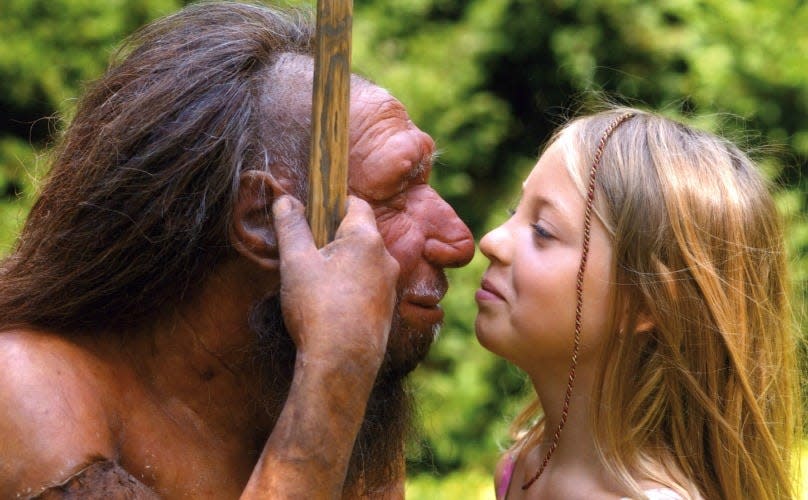-
For some prehistoric people in the Andes, the Paleo diet meant eating lots of plants
-
One study shows that these people’s diets probably consisted of 80% plants.
-
There were as many types of Paleo diets as there were human populations at the time, an expert said.
The popular Paleo diet is based on the belief that we are better off eating like our ancestors by sticking to a diet consisting largely of meat.
But a new study suggests that some of our ancestors didn’t eat meat at all, preferring a diet composed largely of plants.
“Conventional wisdom holds that early human economies focused on hunting — an idea that has led to a number of high-protein diet fads, such as the paleo diet,” says Randy Haas, assistant professor of anthropology at the University of Wyoming and who led the investigation. said in a press release.
“Our analysis shows that the diets consisted of 80 percent plant material and 20 percent meat,” he said.
The research, published Wednesday, studied the remains of ancient people buried in Peru’s Andean Altiplano about 9,000 years ago.
It adds to a body of evidence suggesting that prehistoric diets were already incredibly varied, ranging from meat-heavy to meat-poor, Herman Pontzer, a professor of evolutionary anthropology at Duke University, told Business Insider.
“One way to think about it is that as soon as someone tells you that the Paleo diet was one thing, you can stop listening,” says Pontzer, who was not involved in the study.


You are what you eat
When you look at an anthropological site, it’s easy to think that people always loved a good barbecue.
“Animal bone is often better preserved, more abundant and easier to recover at archaeological sites,” Ceren Kabukcu, an archaeobotanist who studies ancient diets at the University of Liverpool, told BI.
The same goes for the sharp stones and bones used in hunting.
This so-called conservation bias has led some prominent researchers to think that Paleolithic humans must have prioritized hunting over gathering.
But the advent of more modern analytical techniques, including mass spectrometry, has changed the story. For example, scientists can now tell what people ate at that time based on the types of atoms, or isotopes, preserved in human bones, such as nitrogen.
“When you eat protein, you eat nitrogen, and all the nitrogen in the world has different flavors,” says Pontzer.
When you eat something higher up the food chain, “you keep adding this kind of special form of nitrogen,” he said. This isotope binds to bones as they grow, and scientists can read them thousands of years later.
Haas and his collaborators performed this type of analysis on the bones of 24 people from Wilamaya Patjxa and Soro Mik’aya Patjxa in Peru.
This was a group of mobile foragers who lived about 3.7 kilometers above sea level between 9,000 and 6,500 years ago. At that time, agricultural and pastoral economies did not exist, “at least not to the extent we know them today,” Haas told BI in an email.
It was long thought that the group consisted mainly of meat eaters. But Haas and colleagues’ research, published Wednesday in the peer-reviewed journal PLoS ONE, found that they ate between 70 and 95% of the plant matter in their diet.
Tubers – cousins of the modern potato – probably made up the bulk of their meals.
“I was shocked by the result: about 80% plant-based diet among the early Andean foragers,” Haas said.
“It was clear at that point that I had the story all wrong, and there was a good explanation for why that was (preservation bias),” he said.
There is no one Paleo diet
This isn’t the only research that refutes the model often put forward by proponents of the modern definition of the Paleo Diet.
Paleo diet traditionalists stick with the definition popularized by exercise physiologist Loren Cordain in the early 2000s. He called on people to follow a diet rich in meat and low in carbohydrates, in order to emulate their ancestors.
Since then, people have come up with variations on this idea, such as the pegan diet – a mix of the paleo and vegan diets.
These diets may work for you as an individual, but as far as the anthropological evidence goes, they don’t stack up, Pontzer said.
“Where things start to get strange is when we start engaging in storytelling about the past to support a particularly extreme view of what we should eat,” he said.
What is clear is that a meat-heavy diet does not reflect what people ate thousands of years ago.
Instead, prehistoric populations went with what was available around them, almost always relying on a healthy mix of hunting and gathering.
“Meetings are reliable. You always come home with something,” says Pontzen.
Some populations, such as the Arctic, may have been largely dependent on big game for food, says Pontzer, who also wrote “Burn,” a book on the subject.
But others, such as early Australian and South American populations, appear to have eaten mainly plants. Many others were somewhere in between.
Early humans or close ancestors didn’t necessarily shy away from starchy foods, Pontzer said. For example, one study of Neanderthals ate a lot of starchy carbohydrates.


These diets changed with the seasons or as resources became depleted.
And as research techniques become more sophisticated, we can learn even more about our ancestors’ meals by revisiting the evidence, Haas said.
“Humans, as far as we’ve ever been able to tell, have eaten a very varied diet and can do well on all kinds of diets,” Pontzer said,
“Stick to a diet that works. But I do wish we had less of this kind of revisionist history to support our dietary choices, because there’s really little evidence for that,” Pontzer said.
Read the original article on Business Insider